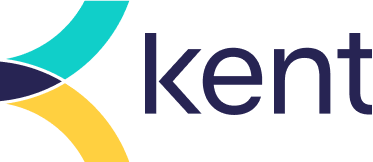Delivering Real Value with Virtual Reality

Waste time, waste money and make projects less safe are three goals never listed on a project execution plan. But are we doing enough to prevent them?
Knowing these risks are real, and understanding that in the U.S., the cost of construction re-work is estimated at nearly $2B per year, failing to leverage the latest technical design review practices is almost like accepting them—planning on them—as part of the project’s scope.
It’s easy to see the advantages of using virtual reality (VR) in the design process. When performed well, it reduces risk, improves safety, quality and accuracy and saves on cost and schedule. Client design reviews are conducted to ensure that the design accurately represents the project scope and requirements for constructability, maintainability and operability. To really leverage the design benefits of VR, we expand our reviews by involving the client deep in the design process.
While our oil and gas clients embrace this powerful technology, simply using VR alone doesn’t necessarily unlock the full potential. But when the technology is coupled with a diverse, perhaps unconventional, review team, the results will surprise you.
A new way of reviewing yields results
We recently used VR technology for the first time on a design review on an oil and gas project. Traditionally, we conduct our reviews using a multi-disciplinary panel of seasoned, internal experts comprising senior managers and engineers who provide input into the design.
In this case, we incorporated VR in the traditional design review and leveraged our knowledge, expertise and cross-sector resources with the client to better inform the reviewers before the traditional paper-based review was conducted. Uniquely, nine operations and maintenance (O&M) staff were invited into the VR environment to review the design from a more practical perspective, leveraging their everyday knowledge.
These boots-on-the-ground operators, with no previous VR experience, identified 32 actionable improvements or defects in the approved design. Of those, it was determined that 15 items would not have been identified during a conventional 3D model review.
Their input helped to rapidly verify clearances, improve layouts and ergonomics within the plant and provide a better comprehensive review than the traditional paper review on its own. Overall, these results represented a potential savings of more than US$2.4M.
Importantly, these items were identified after the traditional reviewers had done their work. Had we not embraced the benefits of technology and diverse thinking, these changes would not have been flagged until during or after construction.
This proved to a key client that using VR technology to its full capacity and leveraging the full talent in their firm brings tangible benefits and improves design outcomes. White collar or blue collar, we all benefit from collaboration during design and deliver the best results when drawing on our collective knowledge and technical capabilities.
Some examples of comments during the workshop that improved the design and avoided potential rework:
| Comment Description | Could Comment be Identified During Conventional 3D Model Review? | Notes | Cost Impact |
| Clearance measurement: 200mm between support column for platform and piping is not enough space for maintenance. | No | Extend platform and move ladder to give additional clearance | $75K USD |
| Verify elevation of the cable tray in the manifold area. Route the cable tray either underground or above ground in such a way that there is no obstruction for O&M personnel. | No | Additional supports to raise cable tray approx. 150 m length of cable tray support every 3 meters | $130K USD |
| Access is limited for maintenance of control valves below the finger rack for dehydrators, de-salters and feed bottom exchangers. | No | Add monorail and electric hoist | $50K USD |
| Access is limited for maintenance of valves underneath second stage discharge KO drum in HP compressor area. | No | Add monorail and electric hoist | $50K USD |
By using our website you consent to all cookies in accordance with our Privacy Policy.










